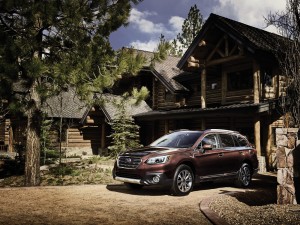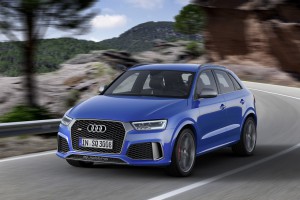
Subaru was one of many smaller automakers that defied the trend of sales losses, in some measure due to strong Outback sales.
August was the first tough month for U.S. new vehicle sales that automakers have faced in some time with sales falling 3.5% compared to the year ago results.
General Motors, Ford, Toyota and Nissan all took hits of more than 5% on the month. Honda sales were down 3.8% for August, but the Japanese maker was expected to post an increase of 2.5% by most estimates.
As usual, utility vehicles and trucks sold in big numbers – with the F-150, Chevy Silverado and GMC Sierra being notable exceptions – for automakers while passenger cars continued their long slide out of favor with the buying public.
However, not every maker suffered in August.
Smaller, niche automakers continued to enjoy positive results last month. The group was led by Subaru and its 14.7% increase. Like many of the “big kids on the block,” Subaru’s top sellers were utility vehicles: Outback and Forester. In fact, the pair enjoyed their strongest August ever as the maker eclipsed 60,000 units for the first time.
However, the Japanese maker wasn’t hurt as significantly by poor car sales. In fact, it’s Legacy sedan posted a sales increase of 35.5% last month and it’s up 9% for the year. The company posted its 57thconsecutive month of increased sales.

Audi posted its 68th consecutive month of record sales. The company's SUVs, like the Q3, helped to bolster sales.
“August 2016 will always be remembered as a ‘Month for the Ages’ because it is the first time our franchise exceeded sales of 60,000 vehicles in a month,” said Thomas J. Doll, President and COO of Subaru of America, Inc.
“These epic results show what our franchise is capable of achieving and is the outcome of the dedicated efforts of our retailers who made these record-setting sales possible.”
(Buyers take a breather as August auto sales slump. For more, Click Here.)
Subaru wasn’t alone in August. Audi’s sales increased 2.5%, which extended its streak of consecutive monthly sales increases to 68. Also like Subaru, utility vehicles led the way with a positive result from a sedan to offset the drop in rest of the “car” line-up.
Audi SUVs bolstered August sales with a 9.1% increase over last August as well as a 20% increase year-to-date. The Q3 posted its third consecutive sales record with 2,238 vehicles sold for the month, an 88% increase over August 2015. Sales of the Q7 rose 16% from last August to 2,347 vehicles, with an increase of 56% year-to-date.
Amid lagging consumer demand for cars, the A4 sedan posted a 17% increase to 2,965 vehicles for the month and a 12% increase year-to-date.
“August marks the end of a successful summer selling season with key models such as the Q3 drawing more customers to the brand,” said Mark Del Rosso, Executive Vice President and Chief Operating Officer, Audi of America. “We are certain that our momentum will result in sustained growth this year.”
Other players with August gains: Jaguar (188.5%), Land Rover (15.4%), Volvo (30.9%) and Porsche (3.5%). Even the larger makers had brands that posted positives: Lincoln was up 7%, Cadillac up 3.9% and Dodge rose 5.1%.
(Click Here for details about Volkswagen’s appeal of the NLRB’s ruling.)
Does this spell bad news for automakers, at least big ones? Not necessarily.
“While August volume results may be disappointing for several automakers, the fundamentals for a healthy industry remain,” noted Stephanie Brinley, senior analyst, IHS Markit. “After several years of strong gains, growth is stabilizing. What is important to read out of the August results is that the industry is largely disciplined on incentives and production.
“Though incentives will play a more significant role for some specific models and segments as is typically true, average transaction prices are also reported to be coming up, reducing the net impact of incentives increases.”
Automakers hiked incentives by 7.7% in August, compared with a year ago, to $3,331 per vehicle. However, the average transaction price August 2016 was up 2.6% to $34,143 for a light vehicle in the United States, according to Kelley Blue Book. General Motors had the greatest increase at nearly 5% while Fiat Chrysler also showed significant growth.
(To find out how many gears are too many, Click Here.)
“Additionally, some monthly volatility for the year was expected, as sales growth was projected to be modest for the year overall. The market is largely healthy and a leveling off of sales growth is expected and not alarming,” Brinley noted.
